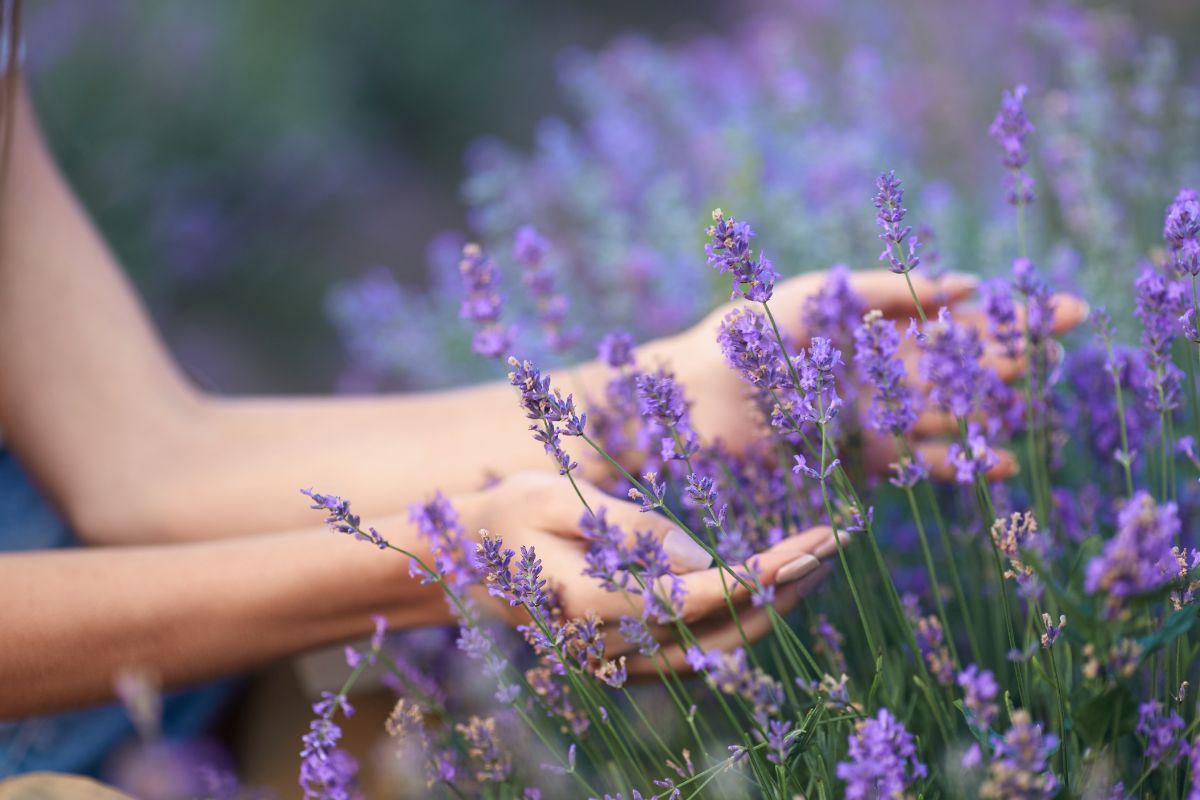You know those days when everything feels like too much? Your mind won’t stop, your body can’t relax, and even when you try to rest, your brain insists on reminding you of everything you didn’t get done. Modern life asks a lot of us, and we’ve gotten used to living on autopilot — always rushing, always connected, always tired. In the middle of all that, finding a true moment of peace seems almost impossible.
But what if I told you that a simple little plant could be the game-changer you’ve been needing? Lavender, with its soft scent and delicate color, is so much more than just a pretty flower or something you find in fancy soaps. It’s been used for centuries by different cultures as a powerful tool for relaxation, emotional balance, and well-being. And this isn’t just old wives’ tales — science has also confirmed some of its benefits.
In this article, I want to show you what lavender is good for and how you can use it in practical ways in your daily life. I’m not here to sell you miracles, but to introduce you to a natural, accessible option for dealing with stress, improving sleep, and living a little lighter. So, grab a seat, maybe even make yourself a cup of tea (lavender, why not?), and let’s explore how this simple herb can become part of your self-care routine in a way that actually makes a difference.
A Little History: Lavender Is Ancient Wisdom
Before it became a favorite in modern spas and a common scent in artisanal products, lavender was already a star back in ancient times — think Ancient Egypt, Greece, and the Roman Empire. The Egyptians used lavender oil during the mummification process, not just for its pleasant aroma, but because they believed it had sacred and purifying properties. For them, lavender was more than just a plant — it was a bridge between the physical and spiritual worlds.
The Romans took things even further. They added lavender flowers to their hot baths — in fact, the name “lavender” comes from the Latin lavare, meaning “to wash.” But it wasn’t just about hygiene. Bathing with lavender was a ritual of self-care, a way to relax the body and mind. They also used it to scent their homes and protect against “bad energies.”
During the Middle Ages, lavender continued to hold a place of importance. Europeans believed it helped ward off disease, especially during times of plague. Lavender fields were often planted around monasteries, and monks would use the plant to make healing balms and infusions. People even carried little lavender sachets in their pockets or sewed them into their clothes — both for the fragrance and to protect against illness and evil spirits.
What’s most fascinating is that even with the passing of centuries and the rise of modern science, lavender never lost its value. In fact, its reputation has only grown. Today, it’s studied and appreciated not just for its historical and cultural relevance, but for its proven therapeutic benefits. When we use lavender today, we’re connecting to a long lineage of care, balance, and natural healing — just with a modern twist.
So, What Is Lavender Good For?
Let’s get to the heart of it. Lavender is mainly used to calm the mind and body. That “ahhh” feeling you get after a rough day can actually come in the form of lavender oil or tea.
Lavender has calming, sedative, and even mildly pain-relieving properties. It’s known to:
- Reduce anxiety and stress;
- Improve sleep quality;
- Ease headaches and muscle tension;
- Soothe symptoms of PMS;
- Create a lighter, more peaceful atmosphere.
And the best part? You don’t need a bunch of expensive products or medications. Lavender is nature’s way of giving you a gentle, reassuring hug.
How to Use Lavender in Your Daily Life
Now that you know what lavender is good for, let’s talk about how to actually bring it into your routine. Here are some simple, practical ways to enjoy the benefits of this magical little plant:
1. Lavender Tea for a Peaceful Night
When your body’s tired but your mind won’t shut off, lavender tea can work wonders.
How to make it:
Boil 200ml of water, remove from heat, and add 1 teaspoon of dried lavender flowers. Cover and steep for 5 to 10 minutes. Strain, sweeten if you like, and enjoy.
Pro tip: Mix with chamomile or fennel for an even more relaxing blend.
2. Essential Oil in a Diffuser
If you love a cozy-smelling home, lavender essential oil is perfect. Just add a few drops to a diffuser and let the scent fill the room. It’s like turning your house into a mini spa.
Want better sleep? Turn on the diffuser 30 minutes before bed. The soft scent will gently signal your brain that it’s time to slow down.
3. Lavender Bath
After a long, stressful day, there’s nothing better than a warm bath. Add 6 to 10 drops of lavender essential oil to your bathwater (or a bucket of warm water if you prefer). It’ll help relax your muscles, calm your mind, and leave your skin lightly scented.
4. Lavender Pillow Sachet
This one’s my favorite. Fill a small cloth bag with dried lavender flowers and place it inside your pillow or next to your bed. The subtle aroma helps you sleep better and gives your bedroom a cozy, peaceful vibe.
5. Lavender Massage Oil
Feeling tense? Mix a few drops of lavender essential oil with a carrier oil like coconut or almond oil and massage your shoulders, feet, or wherever you feel tightness. It brings instant relaxation and smells amazing too.
But What Does Science Say?
If you’re someone who likes to see the evidence, lavender has solid scientific backing. Studies show that linalool — one of the main compounds in lavender essential oil — has calming effects on the central nervous system.
Research also indicates that inhaling lavender can lower cortisol levels (your stress hormone) and even slow your heart rate. Not bad for a plant that grows in fields and gardens around the world, right?
A Personal Story (Because It’s Real Life)
Let me tell you something. There was a time when my anxiety was through the roof. I couldn’t sleep, I felt constantly overwhelmed, and my body was always tense. That’s when a friend gave me a little lavender sachet with a handwritten note: “To help you slow down.”
At first, I thought it was just a cute gesture. But the first night I slept with that sachet on my pillow, I woke up feeling lighter. From then on, I started trying the tea, the diffuser, and the massage oil… and honestly? It became part of my self-care ritual. It’s not magic, but it’s a subtle kind of support that makes a real difference. And if it helped me, maybe it can help you too.
A Bit of Lavender, a Whole World of Well-Being
In the rush of everyday life, finding something simple and natural that helps us slow down is a true gift. Lavender, with all its delicacy and strength, proves that self-care doesn’t have to be complicated. Sometimes, all we need is a familiar scent that soothes us, a warm cup of tea before bed, or a quiet moment with a diffuser running in the late afternoon. It’s these little gestures that, when added together, make a big difference in how we live — and more importantly, in how we feel.
More than just a plant, lavender can be a symbol of presence. Of being in the now. Of coming back to yourself after a long, overwhelming day. And the best part? It fits into any kind of routine — whether you live in a small apartment, have kids running around, or work late hours. Bringing lavender into your daily life is like creating a space to breathe — and everyone deserves that.
So, if you’re looking for gentler, more natural ways to take care of yourself, lavender is a great place to start. You don’t have to change everything at once. Start small: try a tea, a lavender sachet on your pillow, or a drop of essential oil in the diffuser. And then, just observe. Pay attention to how you feel. Because in the end, well-being is about that — listening to your body, respecting your own pace, and finding lightness in the little things — like the soft scent of a flower that has traveled through centuries to be here with us today.
Want to learn even more about how lavender can help with relaxation and well-being? Check out this YouTube video — it’s a great complement to everything we’ve talked about here and brings extra tips in a visual and easy-to-follow way.

Sam Bright is a passionate researcher of the power of medicinal plants and their benefits for health and well-being. With years of study and practice in the use of therapeutic herbs, he is dedicated to sharing accessible, evidence-based knowledge on how nature can support health holistically.
Through his blog, Sam explores everything from the traditional uses of plants to modern scientific discoveries, always with a practical and informative approach. His goal is to help people integrate herbal medicine into their daily lives in a safe and effective way.

